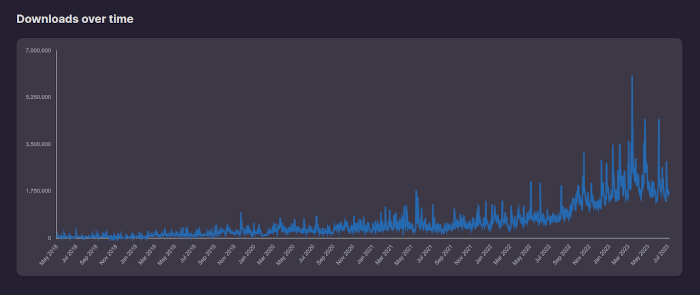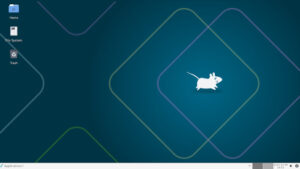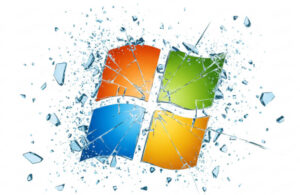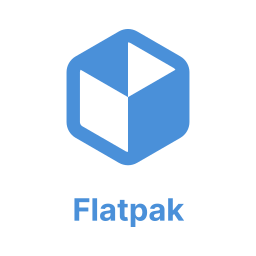As Canonical readies a new Snap-driven version of Ubuntu desktop, Flatpak downloads keep growing and growing and growing…

Use of Snap and Flatpak is on the rise, which is also fueling an increase in the number of immutable distributions that are available to Linux users.
Oliver Grawert, a mobile engineer at Canonical, leaked information about a month ago in a comment on “OMG! Ubuntu” that a Snap-based immutable version of its popular Linux desktop distribution is in the works. In an immutable version, the root file system is read-only so that software can’t interact directly with the system. This makes the system more secure while also avoiding gotchas during upgrades.
Although immutable versions of Linux have been around for ages, these have mainly been used by developers and the like, for testing or software development. More recently, they’re also being used in IOT devices, because they bring added security to devices that don’t get updated frequently, if at all.
“An immutable version exists since 2015, called Ubuntu Core,” Grawert wrote. “There will be a desktop release of it with the next LTS (optional though, the classic desktop install will indeed not go away).”
Ubuntu Core is one of the many immutable minimalist distros designed for connected IoT devices, but this upcoming version mentioned by Grawert will be anything but minimalist. It’ll be a full featured Linux operating system that will be all but identical to Ubuntu’s flagship destop distribution. The main difference for users will be that software will be installed using Ubuntu’s containerized Snap technology rather than using apt, the package management system that is the common way to install software in Ubuntu.
The next long term support version of Ubuntu, version 24.04, isn’t scheduled for release until April 2024, so we still have a while to wait.
Snaps, Flatpaks, and Sandboxed Software
The news of the new Snap-driven immutable desktop came less than a month after Flatpak downloads on Flathub passed the billion mark. Flatpak is Snap’s chief competitor in Linux’s cross-distro containerized distribution arena, and FlatHub is the largest “app store” for downloading Flatpaks.
“This number demonstrates the increasing acceptance of Flatpak among Linux users,” tech writer Bobby Borisov wrote at the time. “Also, it underscores the importance of open-source software and the growing demand for high-quality, reliable, and secure applications.”
Since the milestone was met, Linux users have remained busy downloading and installing Flatpaks, adding more than 116 million additional downloads to the total. This means that the Flatpak store is on track to reach 1.5 billion downloads early next year, if not sooner.
This is important, because it means that both software vendors and Linux users are taking advantage of Snap’s and Flatpak’s “write once, run anywhere” approach to distributing apps to Linux users.
Even before immutable distros came on the scene, the use of Flatpak and Snap was on the rise, primarily because they’ve made it easier for software vendors to distribute software for Linux without having to come up with the separate packaging to meet the requirements of numerous distros, which is the reason why KDE, the popular Linux desktop environment, encourages their use.
“Ten years ago, if you were an app developer and you wanted to put together an application that would reach every Linux user (which, let’s remember, are only 1% of computer users), you had to throw some tarballs into the internet and hope that people would package it up and put it into the different places where people can get it,” Aleix Pol, president of KDE e.V., told me in an interview back in February.
“It’s very important that people can put together applications,” he added. “Simplifying the story from an application developer perspective is something that is very important.”
Flatpak’s and Snaps have also made it easier for folks without a great deal of computer skills to use Linux, since they make installing software on Linux as easy, if not easier, as installing software on Windows. There’s a bit of a caveat here though, since both Flatpak and Snap require a bit of software to be installed on the computer beforehand, which is easy for experienced users but perhaps not so easy for those with limited computer skills who are new to Linux.
That point is largely moot, however, since most Linux distributions now ship with the ability to install either Flatpaks or Snaps. For example, Ubuntu and all of its official spins, are out-of-the-box ready for installing Snaps through Ubuntu’s official Snap Store. The list of distros that ship with support for Flatpaks includes Linux Mint, Fedora, PureOS, Zorin OS, elementary OS and others.
So far, Flatpak is winning the race for dominance in the containerized software distribution arena. One reason is because many users avoid Snap because Ubuntu only allows them to be be distributed through Ubuntu’s official Snap Store, which some see as a proprietary move. Flatpaks, on the other hand, are freely distributable anywhere, and although FlatHub is the largest and most popular Flathub store, there are numerous other platforms where Flatpaks are distributed. In addition, Snaps appear to be slower to load and appear to have performance issues when compared to Flatpaks.
Some are betting heavy that Flatpak and/or Snap will eventually replace package managers such as APT and RPM in the future.
Ubuntu’s Move to Immutable
Immutable Linux distributions, because of their increased security and easier upgrade path, are considered by many to be the future of Linux. Although immutable versions of Linux have been around for ages, until recently these have mainly been used by developers and the like, either for testing or container-based software development.
Lately there’s been a slate of immutable OS releases focused primarily on IoT devices, which benefit not only from immutable’s increased security, but also because of their ability to supply safer upgrades. Until fairly recently, however, immutable OSes weren’t considered appropriate for everyday desktop use, because most software installed the old fashioned way, using traditional package managers such as APT and RPM, require integration with the operating system that an immutable OS’s read-only nature doesn’t allow.
However, the advent of Flatpak and Snap has opened the door for more widespread deployment of immutable systems, since both systems’ sandboxed nature restrict the software’s integration with the underlying operating system. Recently the number of immutable distributions targeting desktop use has been on the rise, and includes Fedora Silverblue, NixOS, GUIX, Vanilla OS, and others.
Once the bugs are worked out of Ubuntu’s upcoming immutable offering, I wouldn’t be surprised to see it become the default base for Canonical’s workstation offering for the enterprise.
Christine Hall has been a journalist since 1971. In 2001, she began writing a weekly consumer computer column and started covering Linux and FOSS in 2002 after making the switch to GNU/Linux. Follow her on Twitter: @BrideOfLinux









